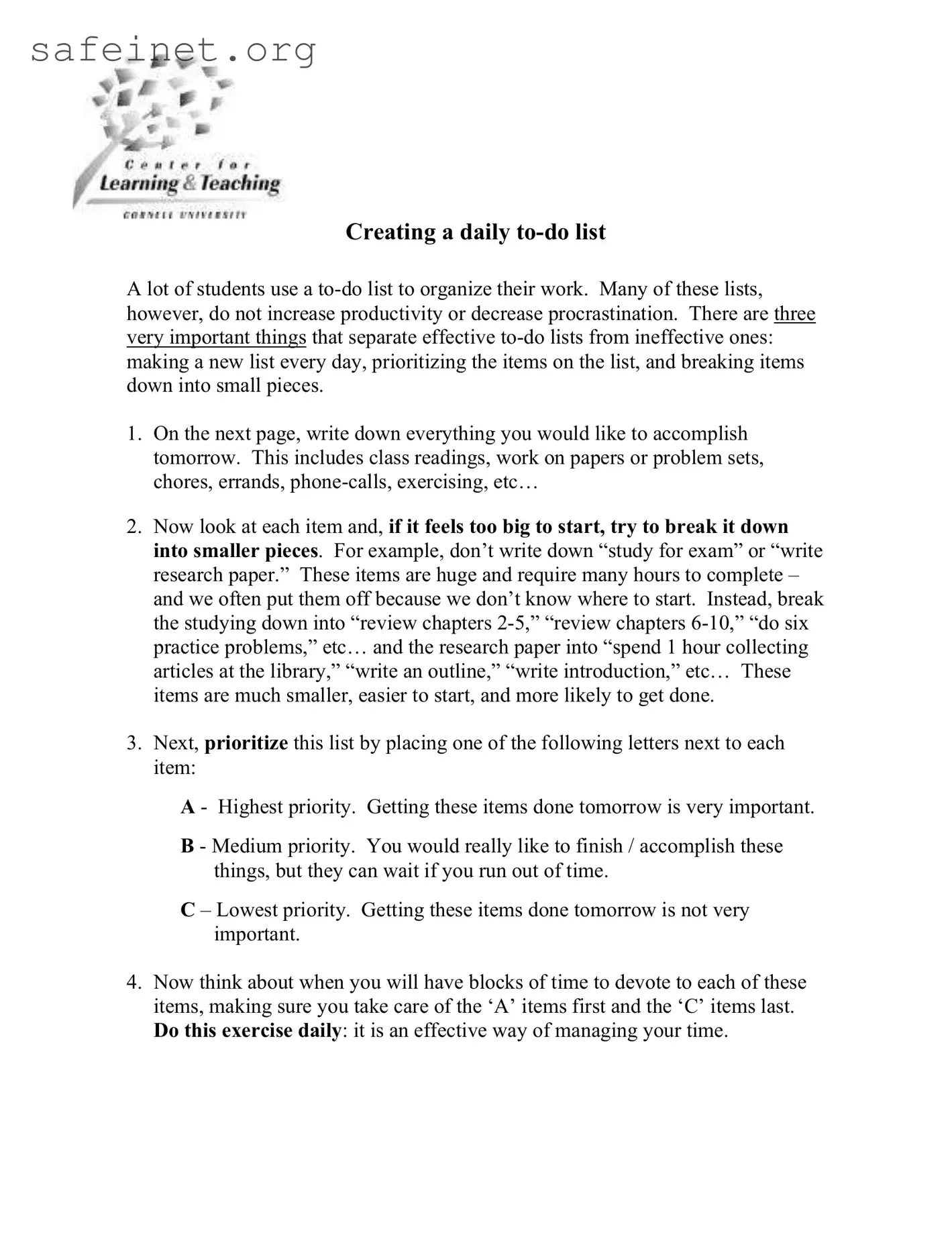Creating a daily to-do list
A lot of students use a to-do list to organize their work. Many of these lists, however, do not increase productivity or decrease procrastination. There are three very important things that separate effective to-do lists from ineffective ones: making a new list every day, prioritizing the items on the list, and breaking items down into small pieces.
1.On the next page, write down everything you would like to accomplish tomorrow. This includes class readings, work on papers or problem sets, chores, errands, phone-calls, exercising, etc…
2.Now look at each item and, if it feels too big to start, try to break it down into smaller pieces. For example, don’t write down “study for exam” or “write research paper.” These items are huge and require many hours to complete – and we often put them off because we don’t know where to start. Instead, break the studying down into “review chapters 2-5,” “review chapters 6-10,” “do six practice problems,” etc… and the research paper into “spend 1 hour collecting articles at the library,” “write an outline,” “write introduction,” etc… These items are much smaller, easier to start, and more likely to get done.
3.Next, prioritize this list by placing one of the following letters next to each item:
A - Highest priority. Getting these items done tomorrow is very important.
B - Medium priority. You would really like to finish / accomplish these things, but they can wait if you run out of time.
C – Lowest priority. Getting these items done tomorrow is not very important.
4.Now think about when you will have blocks of time to devote to each of these items, making sure you take care of the ‘A’ items first and the ‘C’ items last. Do this exercise daily: it is an effective way of managing your time.


